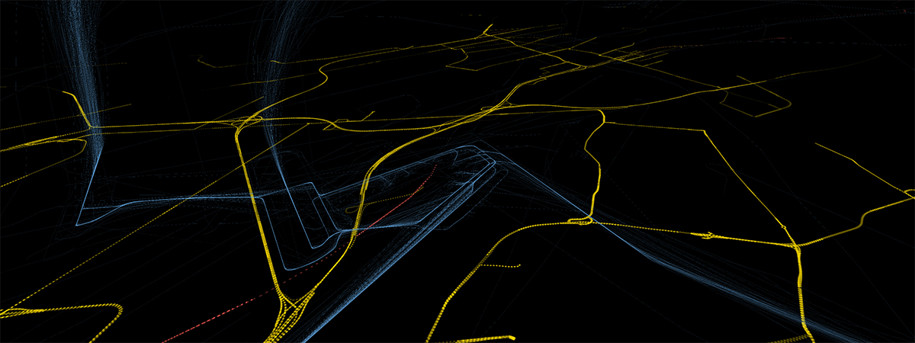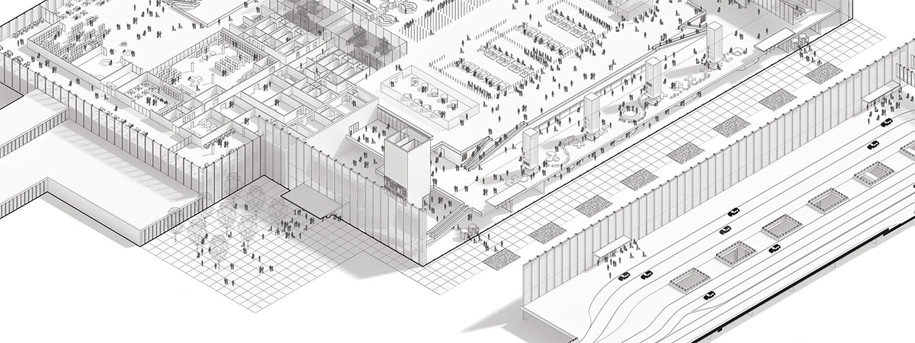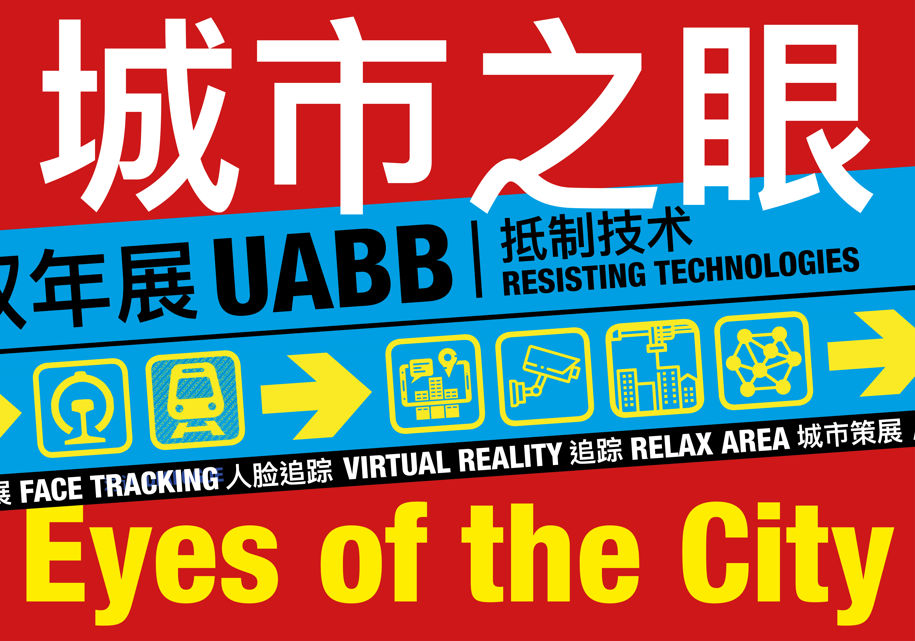KAAN Architecten will participate in the 8th edition of Bi-City Biennale of Urbanism/Architecture (UABB) which will take place in Shenzhen, China. This prestigious international event will open its doors on December 21st, 2019 at the new Futian high-speed Railway Station and at the Shenzhen Museum of Contemporary Art and Urban Planning.
–text by the authors
Within the “Eyes of the City” exhibition curated by MIT professor Carlo Ratti (Chief Curator), Politecnico di Torino and SCUT (Academic Curators), KAAN Architecten will present FLOWCITY, an immersive video installation chartering the era of new mobility, urban infrastructure and transport hubs.
The star of the story is the new Amsterdam Airport Schiphol Terminal, envisioned by KAAN Architecten in collaboration with Estudio Lamela, ABT and Ineco (abbreviated as KL AIR). The project is now undergoing its complex design process involving various stakeholders. This process is nonlinear, often iterative and asynchronous, yet follows a chronological sequence of phases through which design evolves simultaneously. Consequently, the architect has evolved into a coordinator of flows — no longer a builder, but a narrator.
FLOWCITY visualizes how we operate as collective space makers.

The video traces the evolution of the new Terminal – from a winning competition entry through several phases of development, towards the current design decisions. The vast quantity of data, collected over the past three years, is quantified over time to illustrate the progressive and fluid nature of its design.
The reflection on the quantity of stored data includes the prediction of the movement of people within the new terminal and the constant exchange of information between the different flows: workers, travellers and visitors.
An infrastructural hub – the nucleus of this new mobility – resembles a city of flows. Its importance has simultaneously increased with the amount of time people spend in this typology of public spaces and with the centricity of the “passenger experience”. The movements of people are not just determined by their destination, but are also heavily influenced by the space surrounding them. The ultimate goal of all transportation hubs, and not just airport terminals, is to provide fluidity and to accommodate and facilitate all kinds of flows within the same realm.

KAAN Architecten’s contribution to the Bi-City Biennale of Urbanism/Architecture (UABB) consists of a 24-screen installation, displayed within the new Futian high-speed Railway Station exhibition section “Eyes of the City”. FLOWCITY video has been designed by RNDR with OPENRNDR software and commissioned by KAAN Architecten.
Facts & Credits
Project title FLOWCITY: a new era for mobility
Project team KAAN Architecten _ Kees Kaan, Yang Zhang, Martina Margini, Shushen Zhang, Valentina Bencic, Michael Cardelli, Hrvoje Smidihen, Yagiz Söylev, Alexis Keng Yee Oh
RNDR Jeroen Barendse, Boyd Rotgans, Viola Bernacchi, Edwin Jakobs
Collaborators KL AIR _ Arnd Brüninghaus
Event Bi-City Biennale of Urbanism\Architecture (UABB), “Eyes of The City” section
Duration 21 December 2019 — March 2020
Location Shenzhen, China
Chief Curator Carlo Ratti
Academic Curator Politecnico di Torino – Michele Bonino, South China University of Technology – Sun Yimin (South China-Torino Lab)
Executive Curators Daniele Belleri (CRA), Edoardo Bruno, Xu Haohao
Curator of the GBA Academy Politecnico di Milano (Adalberto Del Bo)
About “Eyes of the City” exhibition
The installation FLOWCITY by KAAN Architecten will be on show from December 21th, 2019, until March 2020 in Shenzhen, as part of the “Eyes of the City” exhibition at the 8th edition of the Bi-City Biennale of Urbanism\Architecture (UABB). “Eyes of the City” is curated by MIT professor Carlo Ratti (Chief Curator), Politecnico di Torino and SCUT (Academic Curators), and explores the impact of new technologies, such as Artificial Intelligence and facial recognition, on urban life. The title of the exhibition was inspired by the “eyes on the street” phrase coined by urban activist Jane Jacobs in the 1960s. As new technology permeates the urban landscape, cities themselves are acquiring the ability to see, thanks to sensors and data that enable the built environment to respond to people’s presence in real-time.
American historian of technology Melvin Kranzberg said that “technology is neither good nor bad; nor is it neutral”. Using critical design as a tool, “Eyes of the City” seeks to create experiences that will encourage people to form an opinion and become engaged citizens.

“Eyes of the City” will be the first exhibition to integrate facial recognition on its own premises. Located within Shenzhen’s Futian high-speed railway station and covering a surface of more than 5,000 square meters, the exhibition reacts to its transportation-hub location with a unique design, inspired by duty-free shopping areas. The creative spatial layout, devoid of clear gateways, was developed by CRA-Carlo Ratti Associati and Politecnico di Torino, while the visual language was conceived by the Dutch graphic designer Mieke Gerritzen.
The exhibition is the result of an “open-source curatorship” process. Exhibitors were selected through an open call and provided blueprints to ensure installations would be fabricated locally, without resorting to international shipping. “Eyes of the City” aims to spark conversations of global relevance, engaging people far beyond Shenzhen.
About UABB
Bi-City Biennale of Urbanism\Architecture (UABB) is currently the only biennial exhibition in the world that is based exclusively on the set themes of URBANISM AND URBANIZATION. Co-organized by the two neighboring and closely interacting cities of Shenzhen and Hong Kong, UABB situates itself within the regional context of the rapidly urbanizing Pearl River Delta, concerns itself with globally common urban issues, extensively communicates and interacts with the wider public, is presented using expressions of contemporary visual culture, and engages in international and avant-garde dimensions as well as discourses of public interest.
READ ALSO: Βιο-παλίμψηστο στην Ισπανία. Βυθίζοντας τον επισκέπτη σε έναν άλλο κόσμο